Co-acting signals
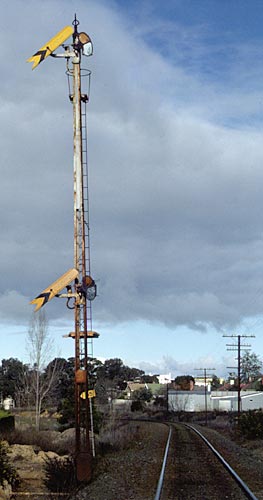 |
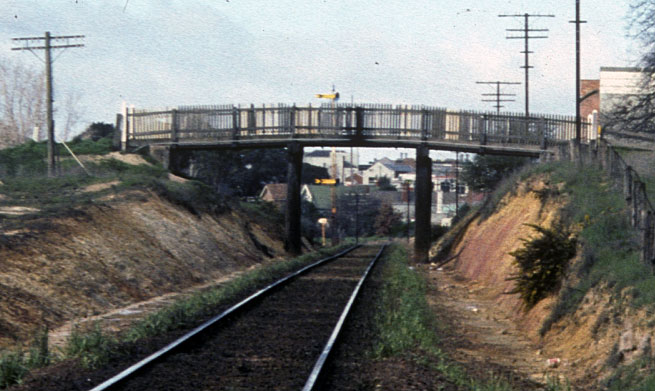 |
|
|
Co-acting signals were provided to make it easier for the driver to see the signal. The signal on the left was Ararat's up distant. It was thought that a standard height post would not afford the driver enough "sight distance" so this Co-acting signal was provided. From a long distance the top arm was clearly visible. As the train got closer the top arm was so high that easy viewing was difficult by which time the bottom arm was in good view. |
|
|
|
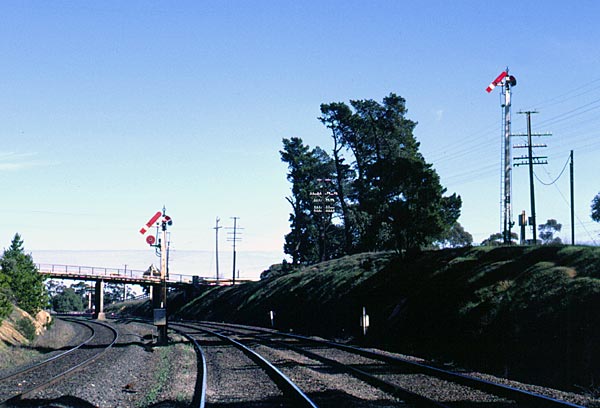 |
|
|
|
Co-acting signals could be either 2 arms on the same post or separate arms on 2 posts. Here is the up home at Broadford. The approach to Broadford was quite curvy and the right hand post was provided so it could be seen as soon as possible. In actuality the left hand post was not really needed but it was for two reasons. The VR was always loath to put a signal anywhere except immediately to the left of the track it applied to, so even though a Co-acting signal was provided the VR still liked to have another in the normal position. The second reason was because on steam locos the drivers view of the right side of the loco was blocked by the boiler and in this situation if the right hand post only was provided the driver would lose sight of it completely as he got closer. Another thing to note here is that the disc was not provided with a Co-acting signal. |
|
|
|
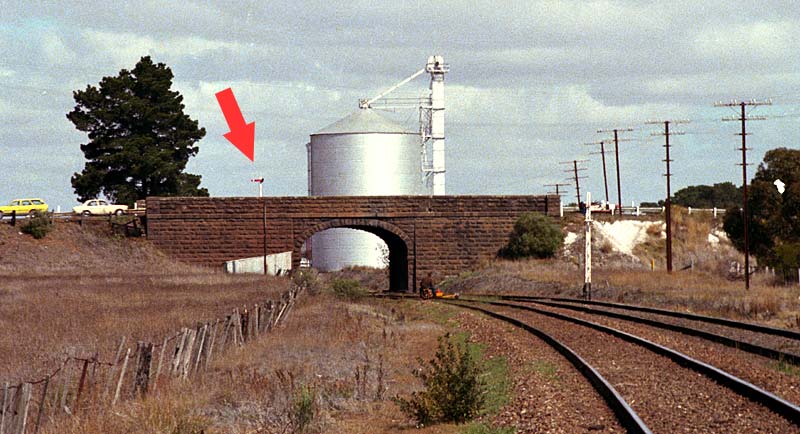 |
|
|
|
These two photos graphically show the value of Co-acting signals. An up train approaching Sunbury was travelling down a very steep gradient. Even though Sunbury was provided with a distant signal it was imperative that the driver be able to see the home signal as early as possible should the distant be at 'caution" The solution was to provide a very tall Co-acting signal. The photo above shows that the top arm only was visible from a distance. As the train got closer the bridge completely obscured sight of the top arm and the bottom arm came into view. In this case a signal placed in the traditional location of left of the track would have been all but useless. I've often wondered however, why the signal was not simply moved out to this side of the bridge? |
|
|
|
|
|
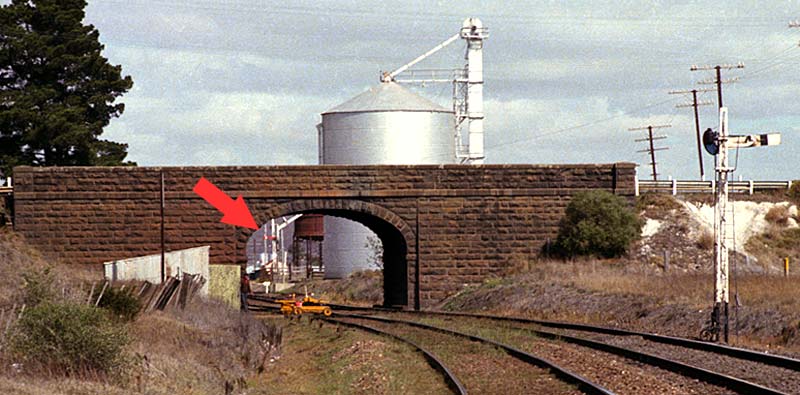 |
|
|
|
|
|
|
|
|
|
|
|
|
|
|
|
|
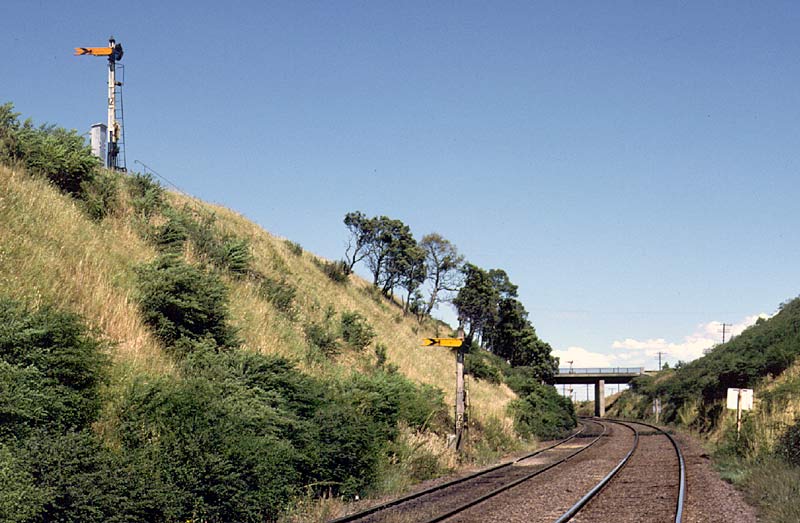
The up distant and up home arrival (seen beyond the overbridge) at Warrenheip were co-acting.
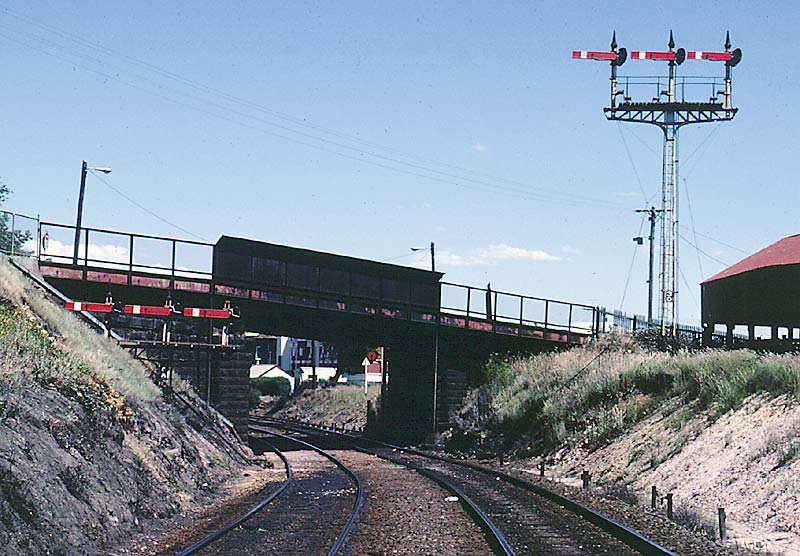
Up Co-acting home arrivals for Ballarat B box. Signal diagram for these signals can be seen by clicking here
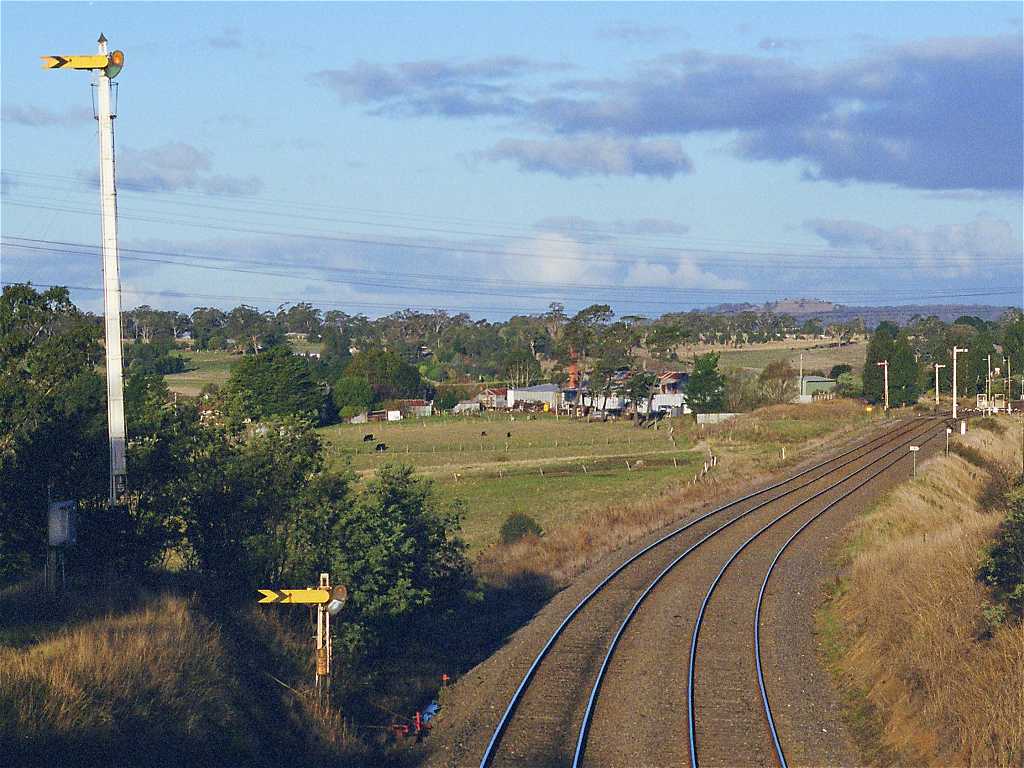
| The up distant for Kyneton was obscured by a road overbridge (which I was standing on to take this photo) which resulted in this coacting signal. photo 2003 |
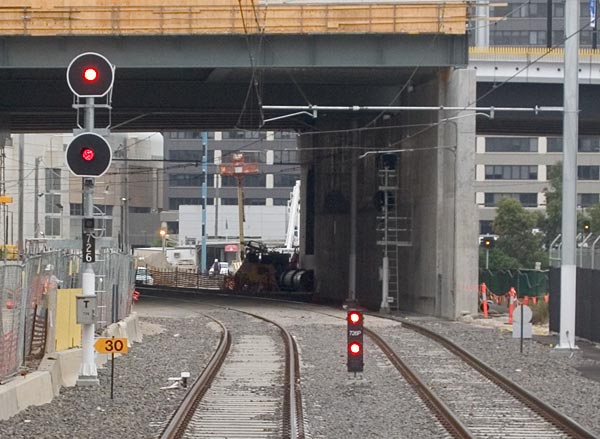
Up co acting 3 position light home signals from the sidings from Melbourne yard onto the viaduct at Spencer Street. 2006
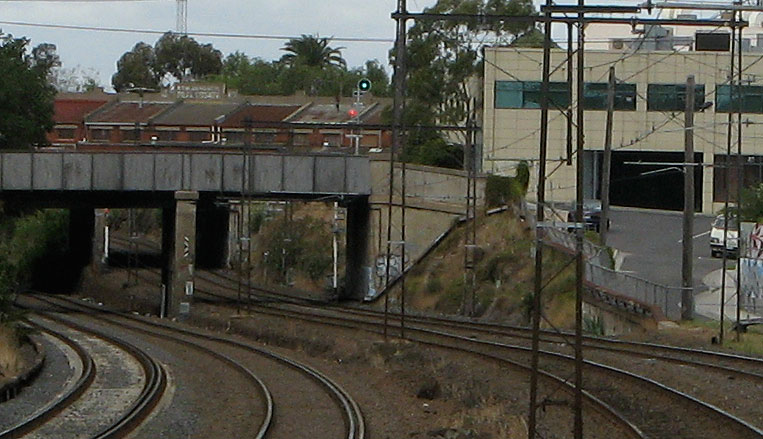
| ABOVE & BELOW: The bridges obscuring last up automatic approaching Footscray on the Sunshine line always presented a sighting problem for drivers, the problem was finally fixed in 2006 when a co-acting signal was erected high on the right hand embankment |
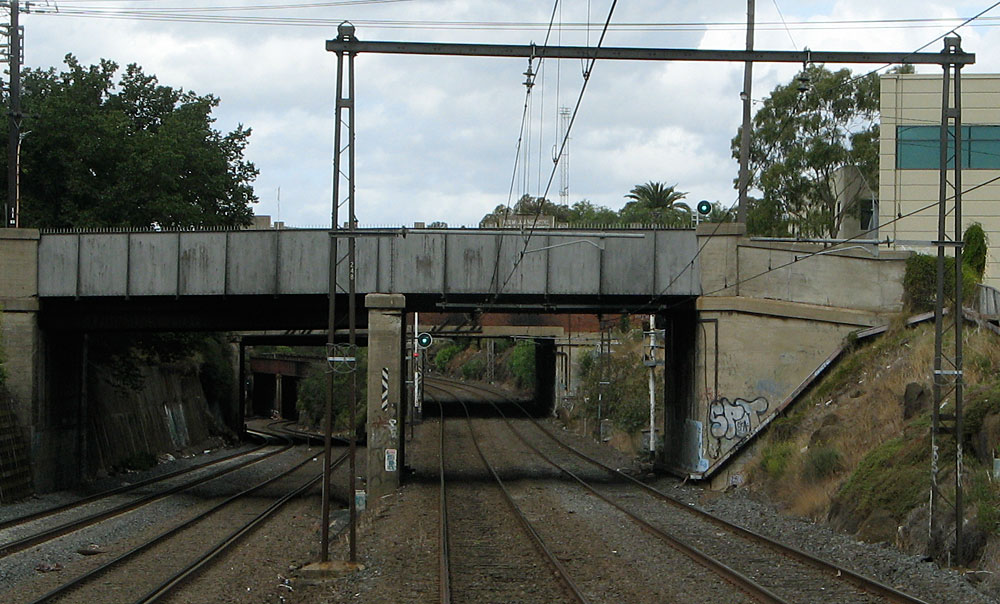
return to 2 position home signals
BACK TO SIGNAL HOMEPAGE










